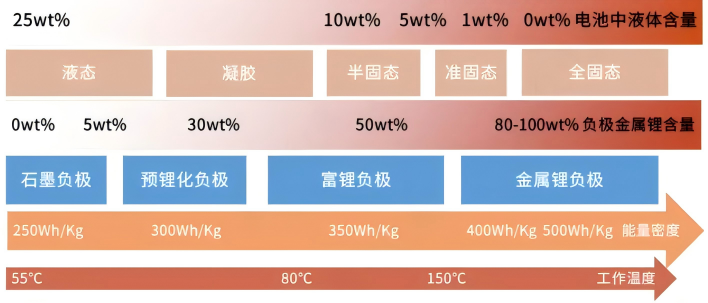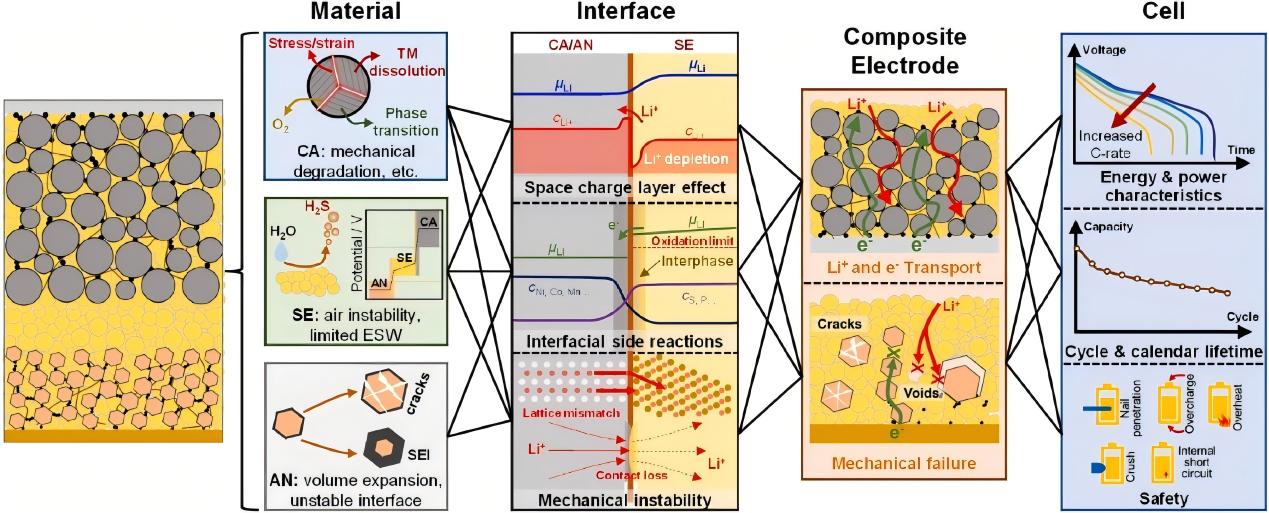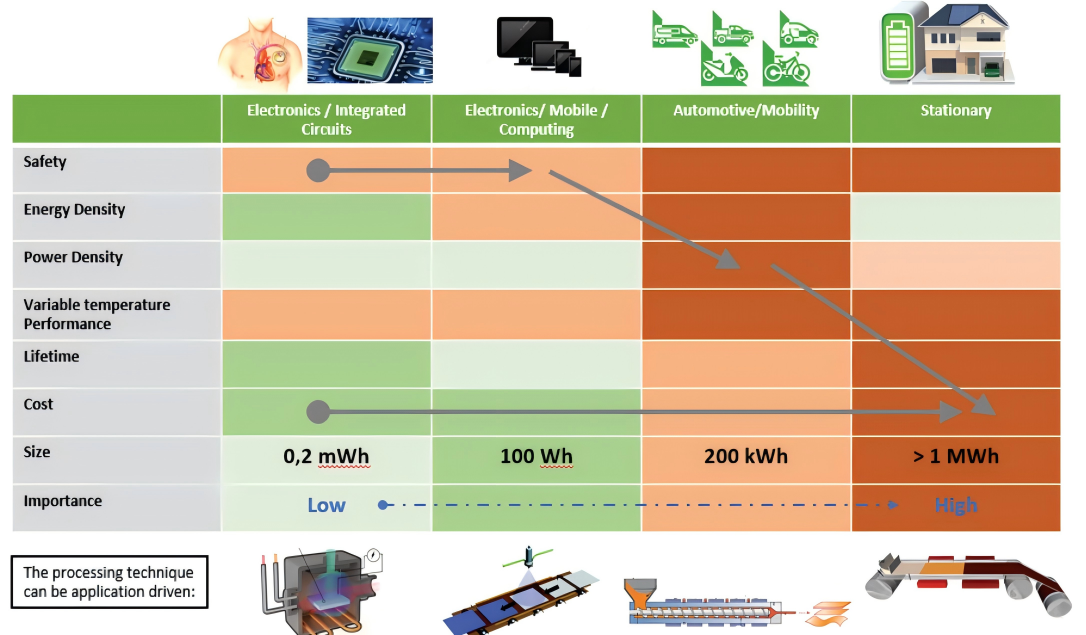English

Since 2023, solid-state batteries have been in the spotlight. In the first half of this year, the installation of Qingtao Energy’s solid-state batteries in the IM Motors L6 electric car sparked widespread interest across the new energy industry. This article provides a simplified overview of solid-state batteries, covering their development, technological progress, and challenges in mass production.
Semi-solid-state batteries, which use a polymer-oxide composite electrolyte, are compatible with existing manufacturing equipment for liquid batteries. Since oxide electrolytes are relatively easier to produce, semi-solid-state batteries entered small-scale production in 2022 and have begun limited use in vehicles.

Figure 1: Future technological development strategies for solid-state batteries
Image source: Solid-State Battery (SSB) WeChat Official Account
Currently, all-solid-state batteries remain in a phase of technical uncertainty. Key research focuses include electrode design, interface optimization, and manufacturing processes. Most reported prototypes have capacities below 20Ah, largely due to defects at the electrode-electrolyte interface that degrade performance. Many scientific challenges must still be solved before all-solid-state batteries can be mass-produced. However, their superior performance under high-temperature and high-pressure conditions makes them promising for specialized fields like deep-sea exploration, drones, and aerospace, where safety and endurance outweigh cost concerns.
A decade ago, China’s research on sulfide electrolytes lagged behind Japan’s, which has long prioritized this path. Today, Chinese universities and companies are actively exploring sulfide-based systems.
Sulfide electrolytes boast the highest ionic conductivity (10^-2 S/cm), rivaling liquid electrolytes. However, they are highly sensitive to moisture and solvents, requiring extreme manufacturing conditions (e.g., -60°C dew points). Compatibility issues with traditional wet-coating solvents also persist. Dry electrode technology could solve these problems, but it’s still underdeveloped, and binder materials need further research.
Solid-state batteries prioritize high energy density and safety. Thus, high-capacity cathode materials like NCM811 and NCA are preferred, alongside silicon-carbon or lithium metal anodes.
In liquid batteries, porous cathodes allow electrolyte penetration. In solid-state versions, poor physical contact between solid components creates uneven lithium-ion pathways. Solutions include using single-crystal cathode materials (5-6μm particles) and reducing porosity. However, current single-crystal materials are prone to structural collapse and particle cracking.

Figure 2: Challenges for solid-state battery cathodes at different scales
Image source: "Designing Cathodes and Cathode Active Materials for Solid-State Batteries"
a. Sulfide Electrolytes: Current materials cost millions of dollars per ton. Producing affordable, stable, and high-conductivity sulfide electrolytes remains a major hurdle.
b. High Interface Resistance: Volume changes during charging/discharging cause cracks. Without liquid compensation (e.g., Qingtao’s 10% "wetting agent"), interface resistance increases, reducing performance.
c. Uneven Lithium Deposition: Poor interface uniformity leads to lithium dendrites, which can pierce the electrolyte and pose safety risks.

Figure 3: Key challenges for sulfide-based solid-state batteries
Image source: "Challenges and Opportunities of Practical Sulfide-Based All-Solid-State Batteries"
Ideal electrolyte films should be under 10μm thick, but current lab-made versions struggle with durability and defect-free production. Thin films risk short circuits and performance decay over time.
Techniques like spraying can create uniform interfaces, but complex processes and high costs hinder scalability.
Stacking electrodes and electrolytes, followed by high-pressure pressing, is a common method. However, improper pressure can cause short circuits, making electrode design and pressure control critical.

Figure 4: Performance metrics and sizes of solid-state batteries in different applications
Image source: "Roadmap for Competitive Production of Solid-State Batteries: How to Convert a Promise into Reality"
As to be an ideal automotive energy, next-gen batteries must balance high energy density, safety, eco-friendliness, and low cost—goals all-solid-state batteries haven’t yet achieved. Just as lithium-ion batteries took over a decade to mainstream, solid-state batteries will need time to mature. Progress may be slow, but the potential rewards are immense.
This is the first one.